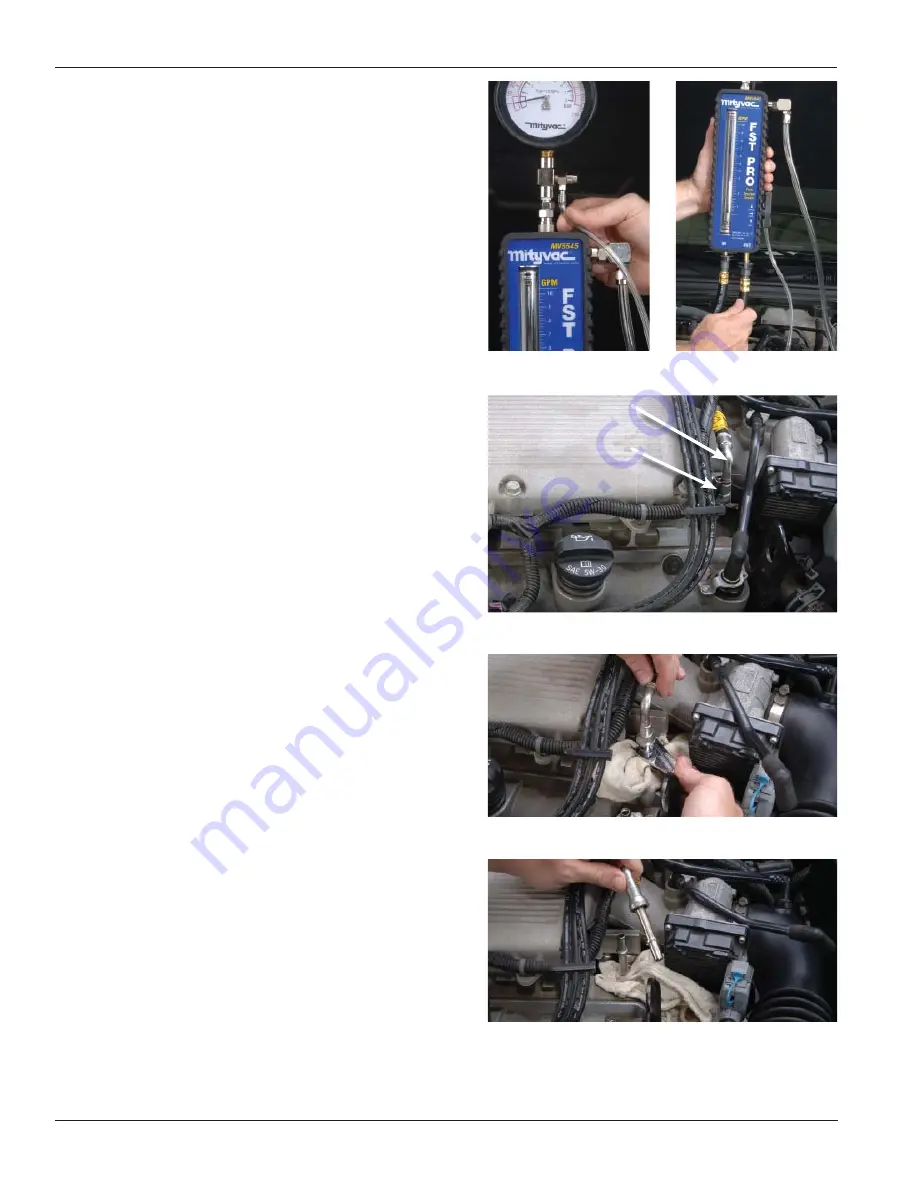
Page Number - 10
Form 824262
Fig. 12
Installation
Once the installation point has been determined, follow the instructions
below to setup the tester prior to disconnecting the fuel line.
1. Place the vehicle transmission in park or neutral, apply the parking
brake, and turn the key off.
2. Hang the pressure gauge under the vehicle hood or other appropri-
ate location.
3. Connect the flowmeter to the pressure gauge using the female
push-to-connect coupler extending from the bottom of the gauge,
and the male connector located on top of the flowmeter. Make sure
the quick-connect sleeve snaps forward to lock the connection.
NOTE:
The flowmeter should hang vertically for the most accurate
fuel flow measurement.
4. Connect the 3 mm clear pressure relief hose to the barb extending
from the push-button pressure relief valve located just under the
gauge (Fig. 8).
5. Place the free ends of the bypass hose and pressure relief hose
into an approved gasoline fuel container. Secure hoses in fuel
container as necessary to prevent spills.
6. Connect one end of each 3/8" inlet and outlet connection hoses to
the bottom fittings on the FST flowmeter (Fig. 9).
7. Follow the vehicle manufacturer’s recommended procedure to
relieve the pressure from the vehicle fuel delivery system.
8. Locate the fuel supply line to the engine’s fuel rail, and select the
best location to disconnect the supply line and install the FST
(Fig. 10). If uncertain of the proper connection point, see the
previous section entitled
Determining Where to Install the FST
.
For additional assistance, consult the vehicle manufacturer’s
service information, or refer to the
Types of Fuel Delivery Systems
section earlier in this manual.
If the engine has a cover, it will most likely have to be removed to
gain appropriate access.
9. Remove or disconnect any obstacles required to gain access to
the connection, and place shop towels under and around the con-
nection to absorb fuel from the disconnected line.
To minimize fuel spillage and reduce the amount of time the fuel
line is disconnected, try to identify the type of connection before
disconnecting the fuel line, and have the required FST connection
adapter(s) readily available (see
Selecting and Installing Adapters
above). Also, identify the inlet and outlet hoses to the tester, and
keep them convenient.
10. Follow the vehicle manufacturer’s service information for the
proper method to disconnect the fuel line. Special wrenches or
disconnect tools may be required (Fig. 11).
WARNING:
Avoid spilling fuel on hot engine parts. Clean-up any
fuel spills immediately after they occur.
11. Install the appropriate adapter into the fuel supply line extending
from the tank (Fig. 12).
Fig. 9
Fig. 8
Fig. 10
Connection Location
Fuel Line
Fig. 11











































